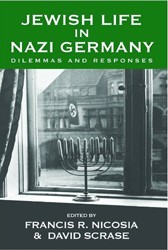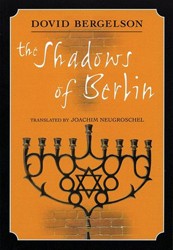Eyewitness accounts that were written by individuals who perished during the Holocaust are incredibly important historical documents. Their immediacy, specificity, and personal perspective on historical events make them valuable gateways into the lives of individuals and communities, as No Justice in Germany: The Breslau Diaries, 1933 – 1941 by Willy Cohn makes clear.
Willy Cohn was a historian, teacher, writer, speaker, and intellectual who actively engaged with Jewish history. The portion of Cohn’s diary that is included in No Justice in Germany spans the period from 1933 to 1941. In his entries, Cohn explores his intellectual and religious life; his relationship with his wife, children, and extended family; his trip to Palestine in 1937; the effects of the Nazis’ anti-Semitic policies on the Jewish community in Breslau, and his eventual attempts to leave Germany for Palestine. Interestingly, Cohn became increasingly self-reflective about what he chose to record for posterity in his entries as anti-Semitic strictures tightened over time.
No Justice in Germany is part of the Stanford Studies in Jewish History and Culture series that is edited by Aron Rodrigue and Steven J. Zipperstein. In the book’s Introduction, Norbert Conrads examines how this English translation contains only a portion of Cohn’s extensive diary that was written during this period. Notably, Conrads also describes how Cohn was writing his memoirs at the same time as his diary (an undertaking that Cohn refers to in specific entries) and Conrads’s description of the care which Cohn took to make sure that his memoirs and dairies would be preserved is heart-wrenching. No Justice in Germany also contains an excellent Translator’s Note by Kenneth Kronenberg in which he examines the tensions in Cohn’s own viewpoints, the complexities of rendering Cohn’s writing in another language, and the rationale behind the inclusion in this edition of meticulously researched footnotes that are used to contextualize Cohn’s references to people and events. These footnotes contribute a great deal to the reader’s overall experience of this dense and complex text. In addition, Cohn’s writing is supplemented by numerous photographs.
Notably, Cohn’s diary ends mid-sentence: following a comma, the rest of the final entry is blank. In the Afterword by the Editor, Conrads describes how Cohn’s subsequent entries have been lost to us and, therefore, how the events leading up to Cohn’s death, and that of his wife Gertrud and two of his five children, in a mass shooting in Lithuania in November 1941 have not been preserved in his own words. As this final entry underlines, Cohn’s diary is an important and haunting record of a family and a community that were shattered by the Holocaust. Afterword, a family overview, glossary, introduction, timeline, translator’s note.





